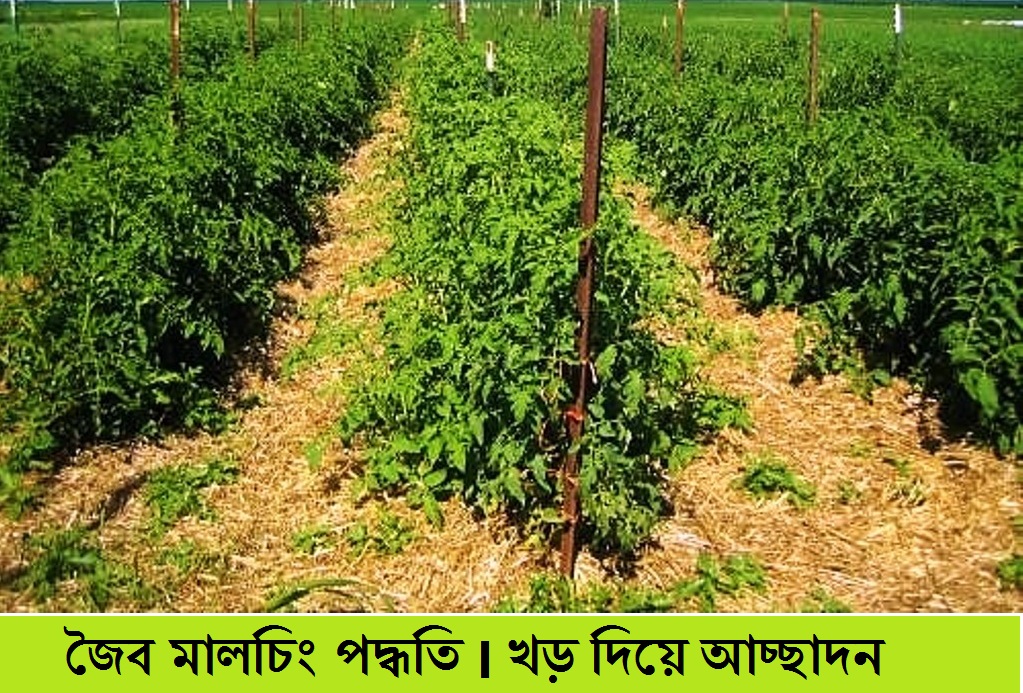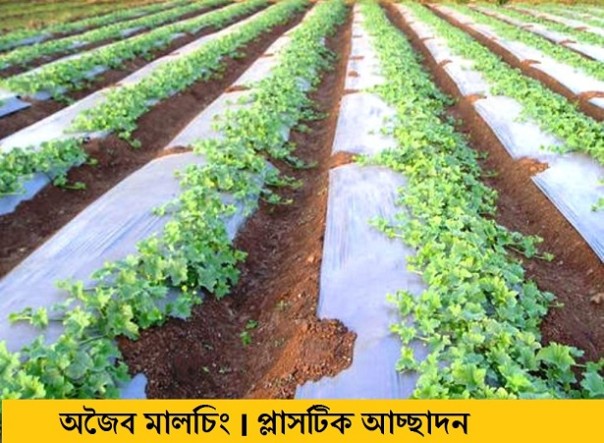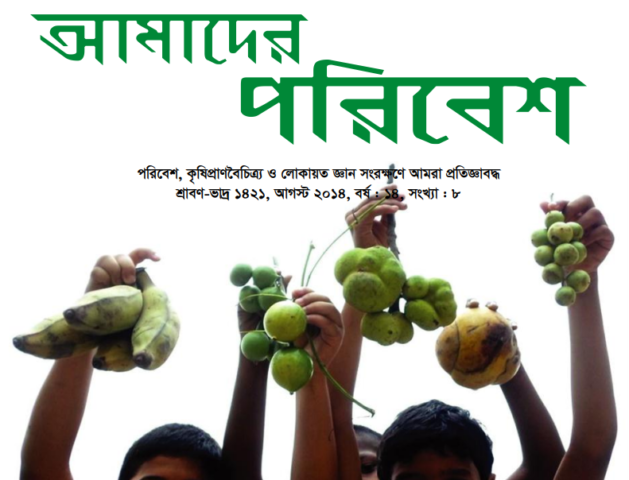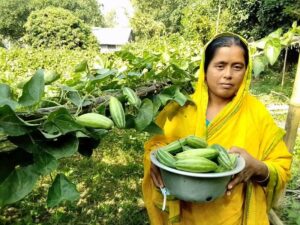The Barind region, located in the northwest of Bangladesh and encompassing parts of the Rajshahi and Rangpur divisions, stands out for its unique topography of undulating plains, depressions, and clayey soil. With lower rainfall compared to other regions, the area faces distinct challenges, including soil with low organic matter that limits fertility, water retention, and absorption, exacerbating drought conditions. Global climate change has further intensified these issues. Decreased rainfall and over-reliance on groundwater for irrigation-intensive crops have significantly lowered the groundwater table, increasing the region’s vulnerability to drought. For instance, rainfall dropped dramatically from approximately 1,738 mm in 1981 to 798 mm in 1992, highlighting the erratic and declining precipitation patterns in the area. Additionally, the region has experienced a steady rise in temperature, with annual average increases of 0.1 to 0.2°C since 1964. Projections indicate this trend could lead to an increase of 0.72°C annually by 2020 and up to 1.3°C by 2050. Temperature analysis over the past 50 years shows warming in 11 months of the year, excluding January (Source: Bonik Barta, October 31, 2017). Despite these challenges, farmers in the Barind region have adapted their practices to mitigate drought impacts, transitioning to less water-intensive crops and employing innovative techniques like mulching. Mulching, which involves covering soil with organic or inorganic materials, helps reduce evaporation, retain soil moisture, and improve fertility. This strategy has gained popularity among local farmers as a viable response to water scarcity and climate change-induced stress. Field observations and input from farmers and experts suggest mulching has significant potential as an adaptation measure in this drought-prone region. Government and non-government organizations are also supporting these local efforts, working to address water scarcity and promote resilience. The resilient farmers of the Barind region, with their practical knowledge and adaptive strategies, continue to contribute to Bangladesh’s food security despite the growing challenges posed by climate change. This article written by Md Shahidul Islam, a representative of BARCIK in the Barind region, sheds light on mulching as an effective drought adaptation strategy for sustainable crop cultivation.
What is Mulching in Agriculture?
The term “mulch” means covering the soil, and the practice is called mulching. It involves covering the soil around plants with materials such as straw, leaves, compost, or plastic sheets to enrich the soil, reduce excessive evaporation or erosion, and suppress weed growth. Mulching is increasingly gaining popularity in agriculture for combating drought, reducing pest infestations, and minimizing pesticide use. Essentially, mulching refers to the process of covering the soil with old, dried, or fresh leaves, straw, or aquatic plants like water hyacinth.
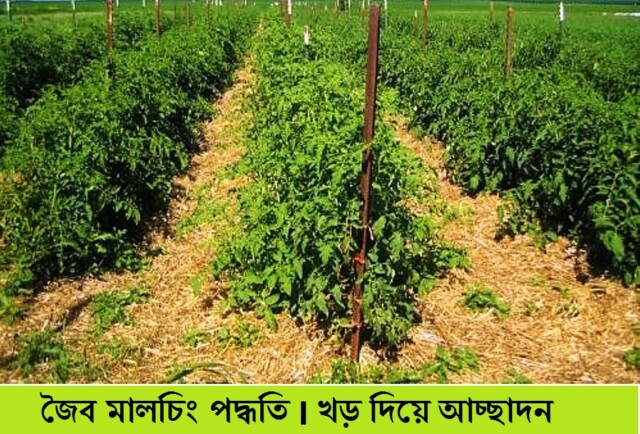
Mulching is not a new technique. Farmers have long used organic waste, straw, or water hyacinth around the base of plants and vegetables to retain moisture and combat drought. The method was initially discovered and practiced by rural farmers and has been in use in drought-prone areas like char lands for generations. Locally, farmers often refer to it as the “drought method.” Although most farmers used to rely on readily available natural materials for mulching, the depletion of local resources and the modernization of agriculture have led to an increased use of plastic mulch in recent times. Commercial farmers now prefer plastic mulching for faster crop growth and better yields. Mulching helps conserve water and creates favorable conditions for crops, making it an effective strategy for combating drought.
Organic Mulching
Organic mulching involves materials derived from once-living plant matter that can reduce soil erosion, suppress weed growth, and regulate airflow on the soil surface. Common materials for organic mulching include tree bark, leaves, dried grass, compost, decomposed kitchen waste, wood chips, newspaper, unused paper, water hyacinth, rice or wheat straw, and stubble.
Organic Mulching and Its Methods
Based on observations and information from local farmers, effective organic mulching often uses water hyacinth collected from rivers or canals. After draining and drying, it works well as a cover. Dried straw or stubble can also be used. Typically, for crops like seed potatoes or after planting seeds or seedlings, a 4-6 inch thick mulch layer is applied. Care must be taken not to apply excessive mulch, which could hinder plant growth. Around the base of plants or vegetable beds, mulch is placed 1-2 inches (2.5-5 cm) away from the stems. Materials used for mulching should not exceed a thickness of 5 cm (2 inches).
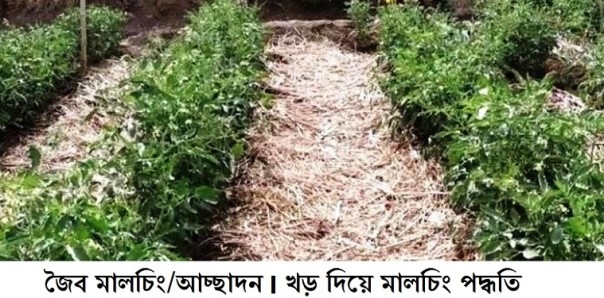
Farmers commonly use dried straw, leaves, and water hyacinth for mulching. For example, farmers like Raihan Jewel from Borgaachhi village in Poba upazila of Rajshahi, a region known for high vegetable production, still practice organic mulching as a drought management strategy. Locally, this method is referred to as the “drought method.”
Farmers apply organic mulching around creeping vegetables like gourds, pumpkins, bitter gourds, papayas, and pointed gourds. For these plants, mulch is spread over a 1-2 foot area around the base, usually 2-3 inches thick. Most creeping plants are trained onto trellises (jhaangla), but mulching is still done at the base to conserve soil moisture during droughts.
In essence, organic mulching is a tried-and-tested method used by farmers to improve soil moisture retention during droughts and enhance crop resilience.
Benefits of Organic Mulching
1. Rapid Seed Germination
By covering the soil with organic mulch, the temperature of the soil surface remains balanced with the environment during both day and night. This is especially beneficial during drought and winter seasons. As a result, seeds germinate more quickly. Additionally, during drought periods, mulching helps retain the necessary soil temperature for better seed germination.
2. Reduction in Chemical Fertilizers and Pesticides
Organic mulching plays a vital role in providing nutrition to plants and crops. Since the materials used in organic mulching decompose easily, they act as compost or organic fertilizer. This compost mixes with the soil over time and serves as a natural nutrient source for plants, reducing the need for chemical fertilizers. With adequate organic nutrients, plants become healthier and more resistant to pests and diseases, minimizing pest infestations and eliminating the need for pesticides.
3. Weed Control and Improved Water Retention
Proper use of organic mulching reduces weed growth. Mulching also increases the soil’s water retention capacity, prevents the growth of weeds, and supports crop nutrition. During drought periods, mulching reduces the need for irrigation, saving water and lowering irrigation costs, which ultimately increases profits.
4. Pest Control
Organic mulching, when combined with natural pest control materials like neem leaves or neem seed powder, effectively reduces pest infestations.
5. Safe and Environment-Friendly Food Production
Crops grown under organic mulching require little to no chemical fertilizers or pesticides. By using organic pest control methods, farmers can produce chemical-free vegetables, fruits, and other crops that are safer and more suitable for the environment, humans, and all living beings.
Limitations of Organic Mulching
1. Rodent Infestation
Certain crops mulched with organic materials may attract rodents. This should be monitored carefully.
2. Waterlogging Concerns
Care should be taken to ensure that mulching does not lead to waterlogging in the field.
3. Insect and Pest Attraction
Since organic mulching uses dry straw, leaves, or other organic materials, it may attract insects and pests. Dry leaves or straw can also harbor spiders and mites.
4. Seed Contamination
Materials like straw, dry grass, and leaves used for mulching may contain seeds of the same species. These seeds can germinate upon contact with soil, resulting in the growth of unwanted weeds. Careful selection of mulching materials is essential to avoid such issues.
In summary, organic mulching is highly beneficial for sustainable agriculture, but farmers must remain vigilant about its limitations and select materials wisely to maximize its effectiveness.
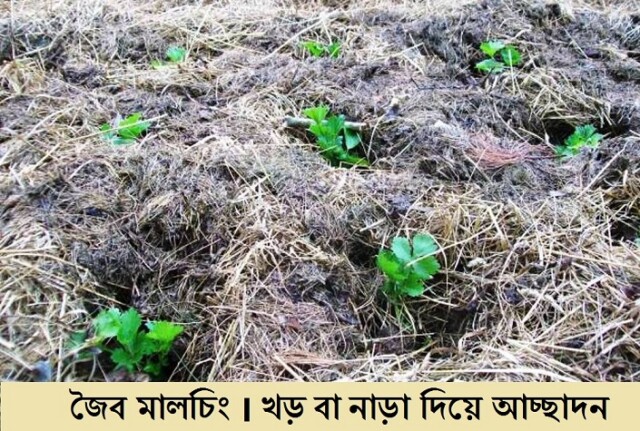
Inorganic Mulching
Inorganic mulching refers to mulching materials that are non-organic, such as plastic, brick fragments, crushed stones, gravel, or small to large stones, used around the base of plants or seedlings. These materials help reduce soil water absorption and evaporation. While inorganic mulching improves soil water retention, prevents erosion, controls weeds, and maintains soil moisture, it does not contribute as much to soil fertility compared to organic mulching.
Among the various inorganic mulching options, plastic mulching has gained significant popularity, especially in modern agriculture. Farmers are increasingly adopting plastic mulching for large-scale commercial farming. Considering the agricultural conditions of Bangladesh, particularly the Barind region, the following discusses the use and method of plastic mulching.
Plastic Mulching: Method and Usage
With agricultural modernization, the use of plastic mulching has become common in Bangladesh. This advanced farming technique promotes faster crop growth and creates a favorable environment for cultivation by covering the soil. In regions like the Barind area, crops such as watermelon, rock melon, capsicum, tomato, strawberry, cauliflower, and cabbage are being successfully grown using plastic mulching. For large-scale commercial farming, plastic mulching significantly reduces production costs. Plastic mulching differs slightly from traditional mulching. A polythene sheet is used, with a silver color on the top and black on the bottom, making it ideal for vegetable cultivation in sandy, loamy, or other soil types.
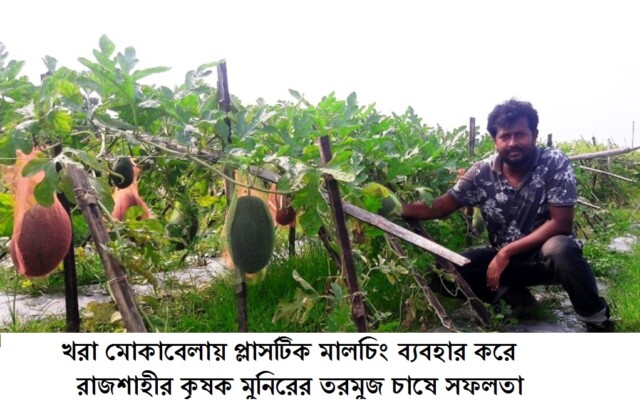
Plastic mulching is highly effective in retaining soil moisture. It prevents soil water evaporation as the plastic cover condenses the evaporating moisture, which then returns to the soil as droplets. This increases the interval between irrigation cycles, reducing water usage and irrigation costs. Irrigation or rainwater enters the soil only through the holes in the plastic, ensuring water reaches the plant roots efficiently. The black color of the underside of the plastic sheet helps retain water and promotes root growth, leading to higher crop yields. It also reduces water wastage, fertilizer use and controls weed and pests. It also helps seeds germinating faster. However, compared to organic mulching materials like water hyacinth, organic compost, or straw, plastic mulching is more expensive and using black or thick plastic in summer can increase soil temperature excessively, potentially causing seedlings to scorch or dry out.
Success of Farmers in Drought-Prone Barind Region Using Mulching Methods
Discussions and direct observations with farmers in the drought-prone and water-scarce Godagari and Poba upazilas of Rajshahi reveal that they use both organic and inorganic mulching methods to combat drought. Young farmer Munir from Godagari upazila has been cultivating various high-yield vegetables and fruits using plastic mulching for the past three years. Since 2016, Munir has been growing year-round watermelon, strawberries, rockmelon, and other crops in Chaitanyapur and Ishwaripur villages of Deopara Union using this method.
Field observations under Munir’s supervision show that last year, he cultivated rockmelon, year-round watermelon, and other crops on three bighas of land. He plans to grow rockmelon and watermelon again in the upcoming season. His success has inspired other local farmers to adopt this technique. Due to the drought-prone nature of the Barind region and water scarcity, Munir uses the plastic mulching method, which has reduced his need for chemical fertilizers, pesticides, and irrigation. This has lowered production costs while increasing yields and profits.
On the other hand, many farmers in Borogachhi village of Poba upazila, famous for vegetable production, prefer organic mulching. Vegetable farmer Raihan Kabir Jewel shared, “We generally use small-scale ‘drought techniques’ (mulching). Especially during severe droughts and water shortages, we cover the roots of vegetable and fruit plants, such as pointed gourd, papaya seedlings, lemon trees, beans, tomatoes, and bitter gourd, with dry or wet straw or water hyacinth. This helps retain soil moisture for longer, requiring less irrigation. As a result, the plants remain nourished with minimal watering.”
Conclusion
Excessive extraction of groundwater in the Barind region has caused severe water shortages in certain areas. Drought and water scarcity have become significant challenges in this region. Additionally, the regional impacts of climate change have exacerbated these issues, with rising temperatures and poorly planned development initiatives intensifying the problem.
Due to these challenges, farmers in the Barind region face difficulties cultivating crops, particularly in the drought-prone red soil areas. Mulching methods can help reduce water wastage in crop production, support environmentally friendly agriculture, increase productivity, and lower production costs, ultimately benefiting farmers economically.
Expanding the use and exchange of knowledge about mulching techniques among farmers in the Barind region is crucial. Both government and non-government organizations need to work collaboratively to promote and support this practice.

